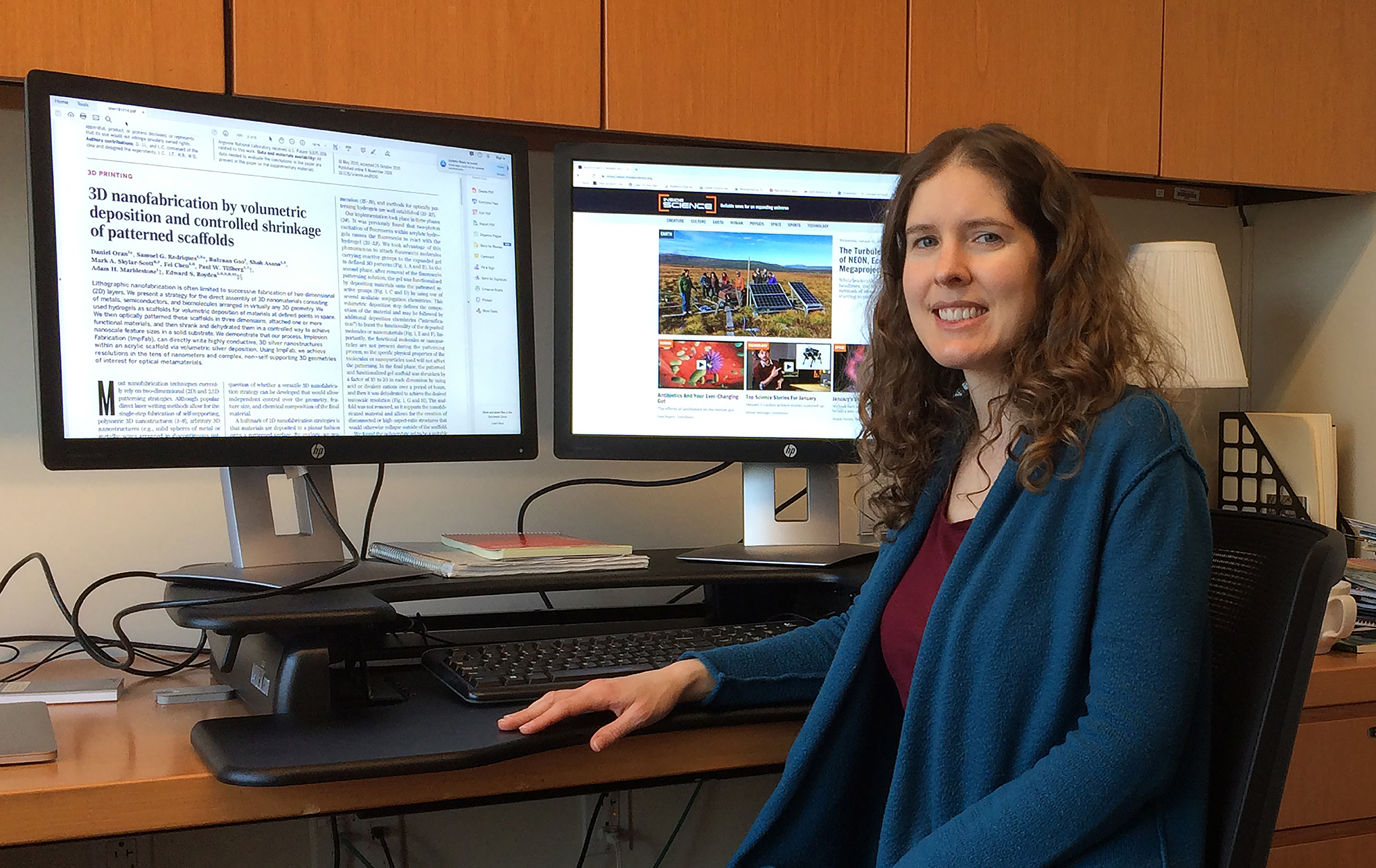“My Life as a Science Writer,” by Catherine Meyers ’06
February 6, 2019
When the movie Hidden Figures, which tells the story of three African American women working for NASA in the 1960s, debuted about two years ago, I joined a friend one Saturday to watch it on the big screen. During a pivotal scene, one of the women—Katherine Goble Johnson—and a team of white, male engineers are staring at a blackboard, trying to solve equations for the trajectory of astronaut John Glenn’s space capsule. They’re stumped until Johnson hits upon a solution: “Euler’s Method,” she says. One of the engineers reacts incredulously: “That’s ancient,” he says. I also reacted somewhat incredulously: “Is Euler’s Method such a big deal?” I thought. “Did they even use it?”
Normally, I might have left my question in the movie theater. But I work as a science writer and editor for the American Institute of Physics, and one of the perks of the job is being able to indulge a wide-ranging curiosity about math and science while on the clock. I figured I wasn’t the only person who reacted with questions to that scene. Many people might have asked “What is Euler’s Method?”
Once back in the office, I pitched the idea of a story on the topic to my colleagues. The website I write for, called Inside Science, produces stories for curious people who usually aren’t scientists or engineers. Hidden Figures was already getting a lot of media attention, so it presented a great opportunity to entice people into reading about the math in the movie.
One of the challenges of my job is finding the sweet spot in science news—stories that will interest many different types of people, but aren’t already covered by other outlets. As I began researching the story, I started to feel I had found this sweet spot. It appeared that many people had asked the same questions I had about the Euler’s Method scene, but I couldn’t find a satisfactory answer online.
So, I began one of the most enjoyable aspects of science writing: the detective work. I contacted a NASA historian, who sent me the technical paper he believed that scene was based on. I sent the paper to a number of mathematicians and asked if they could help me figure out if it used Euler’s Method. Another challenge of being a science writer is knowing you can’t be an expert on all the things you write about. You have to get good at locating real experts, convincing them to help you, and knowing what questions to ask them.
I got lucky when I contacted Steve Strogatz, a mathematician and writer at Cornell University. He graciously explained the calculations in the technical paper to me, but importantly, he also tweeted about the paper. None other than Harvey Mudd math professor Francis Su provided a big break when he replied to the tweet with a link to an interview with the movie’s math consultant.
In the end, I could find no definitive evidence that Katherine Johnson specifically used Euler’s Method in her NASA work. But I had satisfied my curiosity about why Euler’s Method got a shout-out in the movie. And I wrote a story that I hoped introduced mathematical concepts, such as numerical methods, to the interested public. (Full disclosure: I borrowed some descriptions of the Euler Method scene from that story for this blog post.)
The life of a science writer is full of both excitement and challenges. I love the thrill of following new developments in a broad range of scientific and technical disciplines, of learning new things every day, and of tackling the challenge of explaining my newfound knowledge in ways that make it relevant and understandable to the public.
Other challenges are admittedly less thrilling. Sometimes it’s hard to compete in the media landscape with political and pop culture news. Often, I have to write and edit stories in a few hours or days, deadlines that can make it hard to truly understand a new discovery and its context. Other times the pull of a catchy narrative or angle that would make the story more “clickable” can also distort the facts, a trap I have to be on the constant lookout not to fall into.
Harvey Mudd prepared me well for my job. Its mission of educating engineers, scientists, and mathematicians who understand how their work impacts society helped me cultivate a big-picture perspective that I use daily. Ultimately, I am truly pleased when readers tell me they learned something important, thought-provoking or just plain cool from the stories I write.
I encourage scientists and engineers who want to become better at explaining their work to the public to focus on the same big picture. Most fellow humans have a natural curiosity you can connect with if you talk on the level that is most applicable to their own knowledge, lives and interests. Use colorful, everyday language to describe what you do and why you do it. Identify the narrative elements in your research—the theme, the setting, the characters, the plot twists—and highlight the human drama, both in terms of the problems you are trying to solve and the challenges you face in solving them. As the popularity of “Hidden Figures” itself showed, many people will love learning about math, science and technology, especially when it’s told in the form of a story.